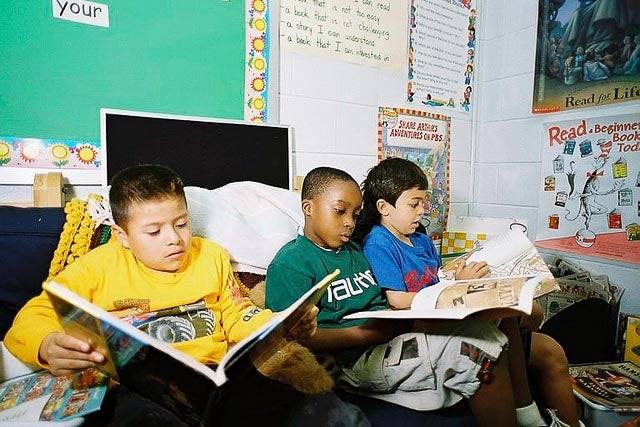This post was originally published at the Education Week blog Urban Education Reform: Bridging Research and Practice.
The Houston Education Research Consortium (HERC), a program under the Kinder Institute for Urban Research at Rice University, is a research-practice partnership between Rice University and the Houston Independent School District (HISD), providing Rice researchers and HISD practitioners the opportunity to closely work together on projects of mutual interest.
Sandra Alvear, a researcher with the Houston Education Research Consortium (HERC), had long had an interest in bilingual education and programming for English Language Learners. Through HERC's partnership with HISD, the largest in the state of Texas and one of the largest in the country, Alvear proposed a research project that would examine the district's bilingual programs to determine which saw the best reading outcomes in both English and Spanish over time.
The project's results helped underscore investments the district had made and provided insight into what factors might influence student success in bilingual education.
Research Questions
At the time the study was conducted, the district offered three types of programs for Spanish-speaking English Language Learners entering kindergarten: traditional, developmental, and two-way bilingual immersion. Traditional programs offered students instruction in Spanish that ended after grade 3, in order to transition them more quickly to English proficiency and fully-English coursework.
As for the other two programs, developmental and two-way bilingual immersion, these were operated by HISD as two forms of dual language programs. Broadly speaking, this means that students were expected to reach full bilingualism and biliteracy in English and Spanish. In practice, HISD offered dual language classrooms that had a robust Spanish instructional component throughout elementary school, such that students received 50% percent Spanish instruction in grade 4 and 40 percent in grade 5. Whereas developmental program students were in class exclusively with Spanish-speaking students, two-way students had more unique class dynamics in that they shared classrooms with both English- and Spanish-speakers.
"I was interested in looking at how these programs maybe differentially shaped their outcomes later," said Alvear. In particular, the research questions posed by Alvear included:
-
Which bilingual program was associated with the largest Spanish-language reading growth?
-
Which bilingual program was associated with the highest English-language reading achievement by grade 5?
Data
Thanks to a data-sharing arrangement, Alvear had access to individual-level data spanning several years, offering an opportunity for retrospective analysis. "You can identify a kindergarten cohort from years ago and follow them throughout their education," said Alvear.
Focusing on students who were in kindergarten in the 2007-2008 school year, Alvear tracked their progress through their fifth grade year in 2012-2013, depending on the language being tested. "The great thing about the HISD data set is that we do have access to measures of socioeconomic status, immigrant status, a multitude of background characteristics, we have a lot of testing data and school characteristics," she said. "Being able to control for those factors helps us zero in on program effects."
Through regular meetings with representatives from the district, Alvear was able to get feedback on her project. "You feel a lot better knowing that the district is engaged in your work and they are able to comment if they see that you need to better understand how a program works or take something else into consideration," said Alvear. "A lot of times with other research you have to make a lot of assumptions about how certain things operate, how data operates, but you don't have to make those assumptions with HISD," she said. "You can just ask."
Results
Alvear found that while all bilingual program types saw improvement in Spanish reading knowledge between kindergarten and third grade, students in two-way bilingual immersion programs seemed to fare better. The same was true for overall achievement in English reading performance in fifth grade.
Alvear also found that English Language Learners who started school with better English language skills performed better in both English and Spanish over time, among other findings in the final research brief published in 2015. Her study was able to validate that the district's increasing investments in two-way programs were supported by the data.
Implications
The district has further modified its bilingual programming since the time of the study. Starting in 2013-14, HISD merged the traditional program with the developmental program, creating the "transitional program." In this effort, language arts and content subjects are taught primarily in Spanish through grade 2, along with daily English development. By grade 3, students receive equal shares of instructional time in English and Spanish.
As for the two-way bilingual programs, they have been re-branded as the "dual-language bilingual program." Schools have the choice to operate programs that implement a 50:50 program model that divides instructional time equally between English and Spanish across all elementary grade levels, or an 80:20 program that begins with 80 percent instructional time in Spanish in kindergarten. By grade 3, English instruction would increase to 50 percent.
Alvear said she is currently continuing her analysis, tracking students' progress through eighth grade.
"One of the main things is we want to make sure the research we produce is of practical use to the district as well. It's not just information that's out there for the sake of knowing," said Alvear.

